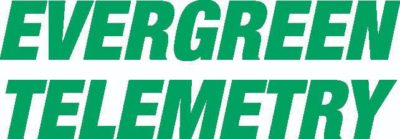Choosing the right elements to test in your A/B experiments is crucial for maximizing conversion lift and ensuring efficient use of your testing resources. While many marketers rely on intuition or broad heuristics, a truly impactful approach is grounded in concrete data analysis and methodical prioritization. This article explores advanced techniques for selecting the most impactful variations, emphasizing actionable methods, real-world examples, and expert insights to help you implement a data-driven testing strategy that yields meaningful results.
Table of Contents
- 1. Prioritizing Test Elements Based on User Interaction Data
- 2. Using Heatmaps and Click Tracking to Identify High-Engagement Areas
- 3. Applying the Pareto Principle to Focus on Key Conversion Factors
- 4. Technical Setup for Effective Variations Selection
- 5. Common Pitfalls and How to Avoid Them
- 6. Practical Case Study: Data-Driven Variations Selection in Action
- 7. Integrating Data-Driven Selection into Your Continuous Testing Workflow
- 8. Final Tips for Sustained Success and ROI
1. Prioritizing Test Elements Based on User Interaction Data
The foundation of impactful element selection lies in understanding how users interact with your page. Clickstream analysis offers granular insights into which components attract attention, prompting you to prioritize testing on those high-engagement areas. To do this effectively:
- Aggregate Click Data: Use tools like Google Analytics, Hotjar, or Crazy Egg to gather data on where users click most frequently. Segment this data by traffic source, device, or user intent to uncover nuanced patterns.
- Identify Attention Hotspots: Focus on regions with the highest click density, such as primary CTA buttons, hero images, or navigation menus. These are prime candidates for variation testing.
- Quantify Impact Potential: For each element, estimate the potential impact on conversions. For example, a button with high clicks but low conversions might benefit from a different copy or design.
For example, if heatmap analysis reveals that 70% of users focus on the headline and the CTA button, then testing variations of these elements—such as wording, color, or placement—can lead to significant conversion improvements.
2. Using Heatmaps and Click Tracking to Identify High-Engagement Areas
Heatmaps and click tracking tools provide visual and quantitative data about user behavior, enabling precise prioritization. To leverage these tools effectively:
- Implement Heatmap Tools: Install heatmap scripts (e.g., Hotjar, Crazy Egg, or VWO) and collect data over a statistically significant sample size—usually a minimum of 1,000 visitors to ensure reliability.
- Segment Heatmap Data: Break down heatmaps by device type, traffic source, or user segment to find different engagement patterns that might suggest tailored test ideas.
- Identify Low-Hanging Fruit: Look for areas with dense attention but low conversion or engagement, such as a headline that gets views but no clicks. These are opportunities for quick wins with targeted variations.
A practical tip: overlay heatmap data with click-tracking funnels to see where users drop off or succeed, helping you pinpoint which elements to test first.
3. Applying the Pareto Principle to Focus on Key Conversion Factors
The Pareto Principle suggests that roughly 80% of your results stem from 20% of your efforts. In A/B testing, this means:
- Identify the Critical Few: Use interaction data, user feedback, and analytics to determine which page elements influence most conversions. Focus your testing on these high-impact areas.
- Limit Test Scope Strategically: Instead of testing many minor variations, concentrate on a few key elements—such as headline, CTA, or layout—that account for the majority of conversion variance.
- Iterate Based on Results: After successful tests, double down on the winning variations and further refine, following the Pareto distribution to maximize ROI.
“Focusing on the vital few high-impact elements ensures your testing efforts translate into tangible conversion lifts, rather than spreading resources too thin across less influential components.”
4. Technical Setup for Effective Variations Selection
Implementing a robust technical setup is essential to accurately identify and prioritize test elements. Key steps include:
- Data Collection Infrastructure: Ensure your analytics tools are configured to track event-level interactions, such as clicks, hovers, and scroll depth. Use custom event tracking for critical elements.
- Tag Management: Use a tag management system (e.g., Google Tag Manager) to deploy tracking scripts without code changes, enabling rapid iteration and testing of new elements.
- Data Analysis Pipeline: Set up automated dashboards (via Data Studio, Tableau, or Power BI) to visualize engagement metrics and identify patterns regularly.
For example, integrating heatmap data with A/B test platforms like Optimizely or VWO allows you to dynamically select and prioritize elements based on real-time user behavior.
5. Common Pitfalls and How to Avoid Them
Even with a data-driven approach, pitfalls can undermine your efforts. Critical mistakes include:
- Misinterpreting Correlation as Causation: Just because an element has high engagement doesn’t mean changing it will improve conversions. Use multivariate testing to confirm causality.
- Ignoring Statistical Significance: Conduct proper power analysis before launching tests. Use tools like Statistical Significance Calculator to determine adequate sample sizes and test durations.
- Test Leakage and Cross-Contamination: Ensure users are randomized properly and that variations are isolated to prevent cross-variation influence, especially in shared environments.
“Always verify your data’s reliability before making optimization decisions. False positives or misaligned segments can lead to costly misdirection.”
6. Practical Case Study: Data-Driven Variations Selection in Action
Consider an e-commerce landing page that receives 10,000 visitors per month. Using heatmaps and click-tracking, the team discovers that:
| Element | Engagement Data | Prioritization Rationale |
|---|---|---|
| Primary CTA Button | High clicks, low conversions | Test different colors and copy to increase conversions |
| Headline | Moderate attention, high bounce rate | Experiment with value propositions and wording |
| Product Images | Low engagement | Deprioritize in testing priorities |
Based on this data, the team decides to run tests on the CTA button and headline first, using A/B variations to optimize their performance. After a month, the tests show a 15% lift in conversions from the CTA color change and a 10% increase from headline wording tweaks.
7. Integrating Data-Driven Selection into Your Continuous Testing Workflow
To sustain a high-impact testing culture:
- Establish a Testing Calendar: Schedule regular review cycles—monthly or quarterly—to reassess high-impact elements based on fresh data.
- Prioritize Based on Data: Use engagement metrics, user feedback, and business impact to rank tests, ensuring resource allocation aligns with potential ROI.
- Automate Data Collection and Analysis: Integrate your analytics tools with your testing platform for real-time insights and rapid iteration.
For example, setting up a dashboard that automatically flags page elements with declining engagement or high bounce rates can prompt immediate testing opportunities, keeping your optimization efforts proactive and data-informed.
8. Final Tips for Maximizing ROI and Sustaining a Testing Culture
Beyond technical execution, fostering a culture of continuous improvement is vital:
- Document and Share Results: Maintain a centralized repository of test outcomes to inform future experiments and avoid repeating ineffective variations.
- Build on Previous Wins: Use successful variations as starting points for further testing, creating a cycle of iterative refinement.
- Align with Broader Strategy: Connect your testing initiatives with overarching conversion and UX goals, referencing foundational principles outlined in {tier1_anchor}.
“Data-driven element selection transforms guesswork into strategic action, ensuring your A/B tests consistently drive meaningful conversion improvements.”
By adopting a systematic, data-informed approach to selecting variations, you elevate your A/B testing from a series of isolated experiments to a cohesive, high-impact optimization engine. For further insights on foundational strategies, revisit {tier1_anchor}.
« Mother your children are like birds
 CxA certification is open to independent industry professionals who meet all education and experience prerequisites and implement commissioning processes in new and existing buildings.
CxA certification is open to independent industry professionals who meet all education and experience prerequisites and implement commissioning processes in new and existing buildings. The Energy Management Process Seminar is designed to help candidates understand the energy management process and how it can be applied and serves as the final preparation for the Energy Management Professional (EMP) exam.
The Energy Management Process Seminar is designed to help candidates understand the energy management process and how it can be applied and serves as the final preparation for the Energy Management Professional (EMP) exam.














